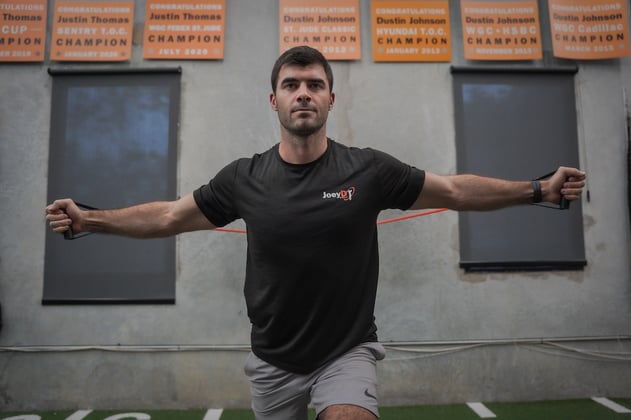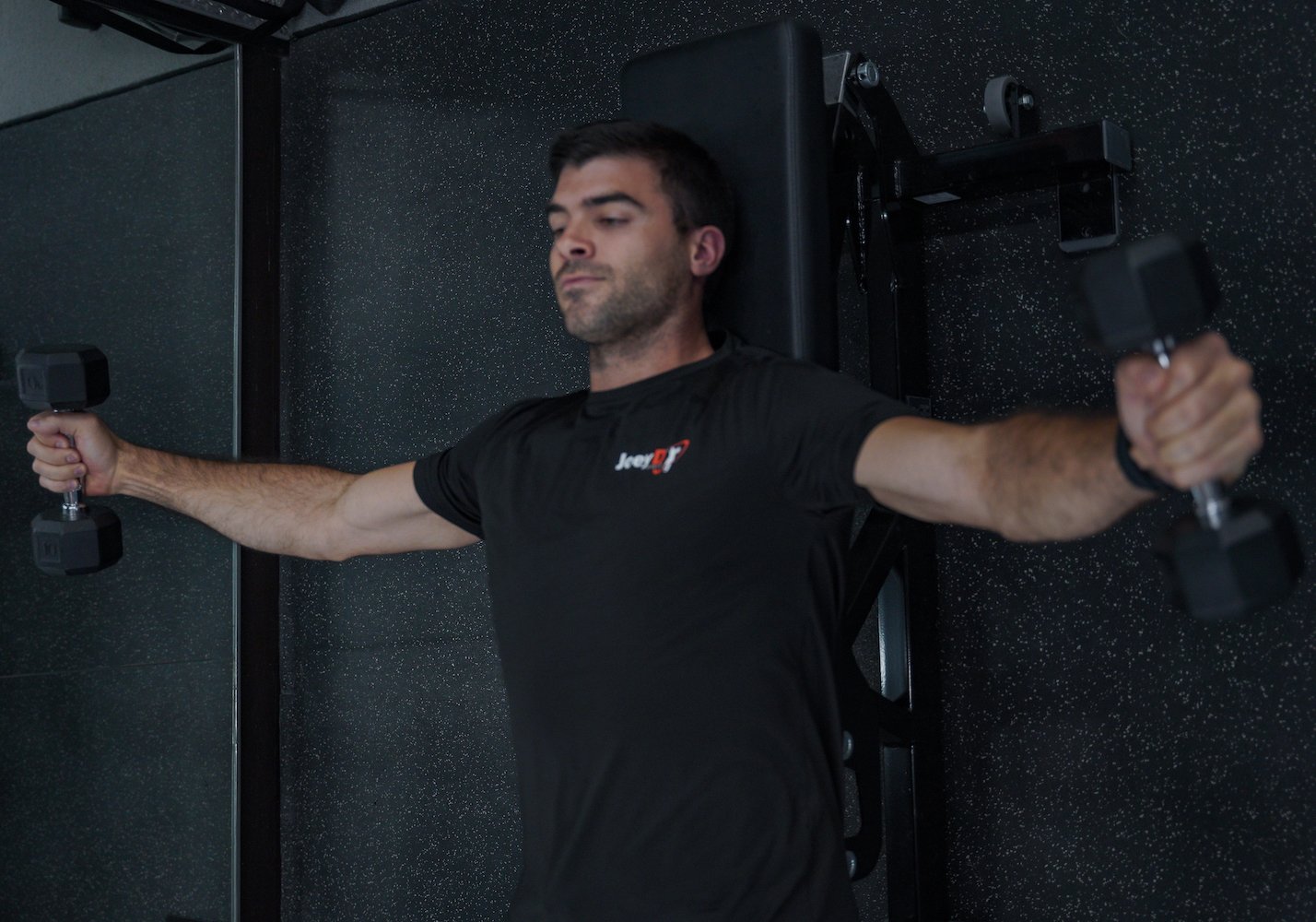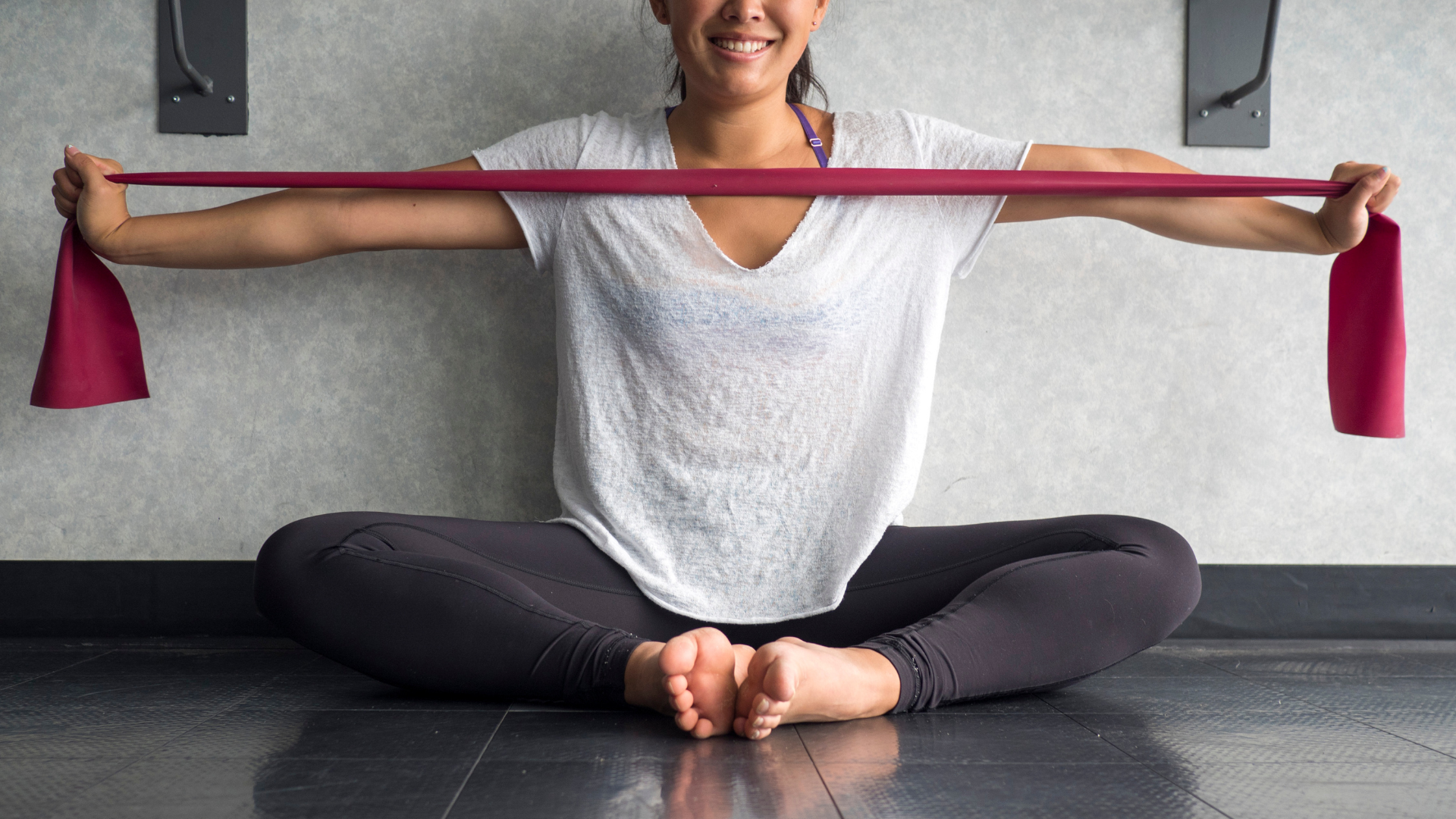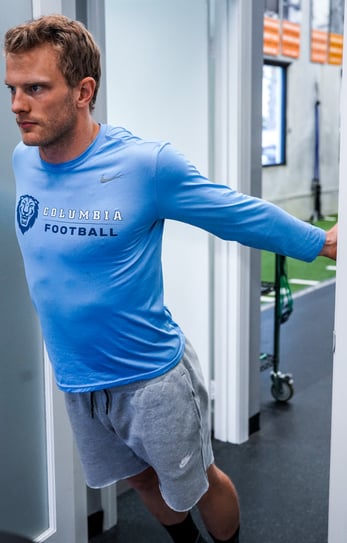
Chest flys are a widely-implemented exercise that works your chest, shoulders, and triceps. But are they good for your golf swing?
Everyone's familiar with a dumbbell or a resistance band chest fly, right?
It’s a widely-implemented exercise that works your chest, shoulders, and triceps. In golf especially, your chest and shoulders play a key role in the golf swing. Remember, it’s all about stability (which comes from strength).
Chest flys are such a common exercise that many golfers simply do them as part of a normal workout routine. We’ve heard from clients that flys might impact their flexibility, another core element to the golf swing.
Is it true? Is it a bunch of BS? Great questions. Let’s answer ‘em.
The General Idea
We want mobility and flexibility to help our golf swing.
The more mobile we are, the more power we can generate. The more flexible our body, the better equipped it is to repeat the motion over and over again. Power comes from the ground up, as we know; speed (everyone’s favorite word in golf these days), stability, and power all work together.
The more mobile we are and the more flexible we are, the more stable we can be – and we’ll make a better golf swing as a result.
So, what about flys? Can they really f*ck your flexibility?
We asked Coach Brianna for some perspective on flys and how they impact your golf game.

They can…
While there are benefits to using flys to help your golf game, we must also include a few words of caution.
Obviously, flys are a chest workout. If done incorrectly or alone with no opposite or supporting exercises, flys can tighten everything up. You can tear muscle fibers and, as a result, you’ll limit your mobility and your golf swing will suffer.
Limiting your range of motion is detrimental to the golf swing, because power and stability depend on flexibility.
…but they can also benefit your flexibility.
“If you do them correctly – within proper golf exercise programming with mobility and flexibility work, yes. Flys are going to benefit you,” she said. “You’ll be strengthening your muscles without tightening those muscles and your joints. The key is to improve your mobility, and flys will help.”
Opposing muscles would include anything in your back. As an example: if you work your pecs, you’d then work your back. If you work your glutes, work your quads next.
The same applies to your left side and your right side. Work on one, then the other.

How to Properly Train
Want to do some flys or take on a chest workout? We’ve got you covered.
Coach Brianna has a couple of go-to exercises that help with building strength in your chest muscles – but again, it’s important to work opposing muscles so you’re maximizing the flexibility in an important area of your body (particularly for golf).
With a resistance band
No surprises here. Simply start with a resistance band and your hands out in front of you, then extend out and open up. You’ll open your chest and start to build that strength we’ve been talking about. And you don’t even need dumbbells!

Just the frame
You can also do the appropriately-named “door frame exercise.” Walk up to the door frame, hold it with your hand, then open up your chest by turning in one direction for a few reps, then switch hands and repeat on the other side.
Any “chest opener” type of exercise is going to help your mobility and flexibility when added to an overall workout routine.
What's next?
Whether you're working out in the gym or at home, Hit IT Great can help you train just like the pros! Many of our programs incorporate chest exercises to help you safely build muscle and improve flexibility. Check out our training programs and find one, or several, that works for you!


